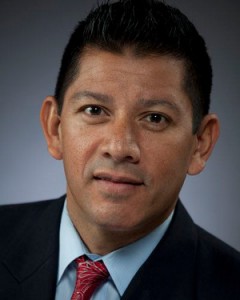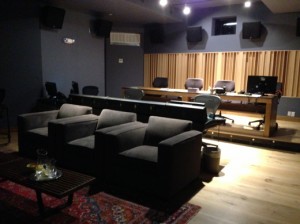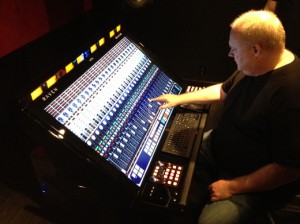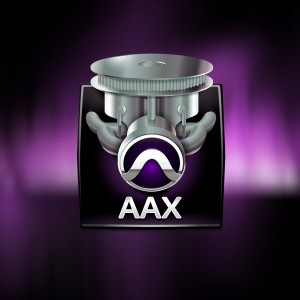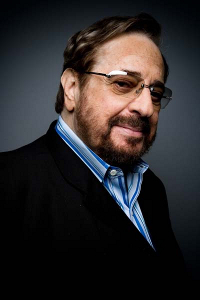2013 In Review — The Year in Audio
2013 was definitely NOT business as usual.
In NYC, LA, Nashville and beyond, it seemed like audio was growing in every direction this year. Whether you’re looking at recording or audio post facilities, music licensing, online startups, and more, the clear theme for 2013 was expansion – not contraction. Some studios closed, but a lot more either opened or invested seriously in reinforced infrastructure.
Meanwhile, the tools we all work with – hardware, plugins, DAWs – continued to be rolled out or updated, unabated. Like the rest of the human race, audio scientists remain fiercely focused on improving.
Outside of the positive vibes were questions and setbacks, of course. The overall financial direction of the music industry – and therefore the audio vertical which fuels it – seemed impossible to discern in light of streaming services. And some true landmark minds were lost, leaving a permanent footprint on our profession.
To see where we’ve been the last 365 days, read on. Then rest up and prep for 2014 – based on the action from this past year, we’re in for quite an adventure.
Empire Building
There was intrigue and innovation everywhere on the business side, as moves large and small added up to constantly reshape the landscape.
Mergers and acquisitions stayed in style. Gibson acquired Cakewalk to put a DAW under its ever-growing auspices. Then Yahama closed out the year by soaking up Line 6.
The keyest of the industry’s key players, Avid, had its share of ups and downs. Shortly after naming a new CEO in Louis Hernandez, the ubiquitous software/hardware giant announced it was postponing its Q4 and full-year earnings for 2012 due to accounting complexities. Although the company has yet to report subsequent earnings and could potentially be delisted by NASDAQ in 2014, it maintains that its balance sheet is healthy.
Startups continued to pop up and go at it. The dormant online-music-collaboration space suddenly heated up, with Blend.io setting up shop inside Betaworks. Then Splice soaked up $2.75 million in funding of its own, thanks to the savvy of co-founder Steve Martocci (formerly of GroupMe).
It seemed like coast-to-coast buildup was all the rage, on every level. NYC-based Downtown made its presence felt in LA, as did the international concern Imagem Music. Dallas-based Stephen Arnold Music rolled out an office in Manhattan. Writing/recording room Electracraft brought its creativity-inducing services to Hollywood. And Chicago-based Comma Music spread its wings in both directions.
Entrepreneurs were everywhere, with new business entities always arriving like producer/engineer manager Ollie Hammett’s launch of Spark Management, or indie rockers Andy Chase and Christopher Moll revving up online music licensing concern Unfiltered Tracks.
People were always making moves, as well, such as Mastering Engineer Joe LaPorta going to Sterling Sound, audio post mixer Dan Flosdorf heading to Heard City, and music supervisor Ryan Fitch jumping ship from Saatchi & Saatchi to BMG Chrysalis. The Production Music Association’s search for a new head ended successfully with the appointment of seasoned SESAC pro Hunter Williams as its Executive Director.
Stakes proved high in the educational realm, as well. SAE NY moved out of its hectic Herald Square digs and into the calming environs of Chelsea in style. In Nashville, the revered Blackbird Studio became the home of its own formidable school, The Blackbird Academy. The DJ school specialists Dubspot are building on their NYC success, with an LA campus in the offing for 2014.
Retail wasn’t sitting still either. Vintage King built up in Music City with its new Carl Tatz-designed Nashville store.
Meanwhile, the studio business itself saw no shortage of action, especially on the West Coast. The legendary Bill Putnam-designed Ocean Way Recording was acquired by Hudson Pacific Properties, Inc. from Allen Sides. Super mixer Tony Maserati and Echo Park rehearsal + recording facility Bedrock.LA teamed to start up a 30,000 sq. ft. “modern day Brill Building” in LA’s K-Town. Still in LA, Infrasonic Sound Recording, owned by Pete Lyman and Jeff Ehrenberg, sold their recording facility to Studio Manager Eric Palmquist.
Back East, audioEngine founder Bob Giammarco acquired full ownership of the audio post company’s NYC and Phoenix facilities. And in an interesting twist, Albany’s John Storyk-designed Cotton Hill Studios was acquired by an advertising agency, Fingerpaint.
Studio Evolution
Speaking of studios, whether it was facilities opening up, expanding, or evolving, it seemed like there was nonstop action in this essential sector.
Harbor Sound lit a spark in NYC audio post with a new 10,000 sq. ft. Dolby-certified facility. In Brooklyn, the new Dungeon Beach was its own epicenter for audio post. The ambitious new 4K theater in Manhattan’s Digital Arts opened ears and eyes.
Marc Alan Goodman’s well-documented Strange Weather Brooklyn opened to applause in Williamsburg, The Garden came online, offering up an open-minded environment for mixing and tracking in Brooklyn’s Clinton Hill neighborhood. And we thought YouTooCanWoo was emblematic of the next wave, helmed as it is by founders of indie rockers French Horn Rebellion and Savoir Adore. On the mastering side, Greenpoint’s Timeless Mastering kicked it up when Heba Kadry launched her practice there.
Over LA-way, The Fortress – located in the former Bomb Shelter owned by STP’s Eric Kretz – was a recent arrival that got attention, thanks to its spirited owners and SSL 4048+ console. Capitol Studios brought two new Neve Genesys production rooms online, and introduced the more affordable Beacon Mastering. Ocean Way’s new Studio C production room was immediately occupied by composer/arranger/conductor Chris Walden.
Studios moved into other studios as well, as reorganizing from Hurricane Sandy remained necessary for facilities like The Pigeon Club, which set up shop within Kaleidoscope Sound.
Rock star studios remained fashionable as always. Our visit to Vince Clarke’s synthesizer playground in Brooklyn was one of our most-read articles this year. And there’s always more in the pipeline, like super producer Paul Epworth’s upcoming restoration of The Church Studio, formerly owned by Eurythmic Dave Stewart.
When new rooms weren’t opening up, existing studios were advancing at a fast pace. Downtown Music Studios unveiled a unique future-retro pairing with its custom iPad-controlled API. The Bunker ramped up their Studio A with an SSL 4000 E, and Quad Lakeside bolstered their sonics with a classic Trident 80c console and Studer sidecar. A new API 1608 lit it up in Kemado Records’ Greenpoint facility.
Manhattan Center Studios made a big statement with their earth-shaking monitor makeover. Up a tad in Midtown, Premier Studios stepped it up with a rebuilt 1968 Steinway B. We saw how deep audio networking could go at Videohelper, and back in Brooklyn Fall On Your Sword unveiled their new Dolby-tuned mix room, complete with a 7.1 Surround System from JBL.
World-class studio closings did not feel as rampant as in years passed. Notable exits included Saint Claire Recording Company in Lexington, KY, and Hal Winer’s highly respected BiCoastal Music in Ossining, NY. Rick Slater put his own spin on these down developments in a widely circulated op-ed piece.
Hardware, Software, Everywhere
For elite studios to laptop jockeys, new hardware and software are still the spice of life. From analog realm to the digital, there was plenty of new stuff to make sound with in 2013.
The biggest waves were made by Slate, whose multitouch control surface, the RAVEN MTX, finally went from trade show fantasy to fully available. Its smaller brother the RAVEN MTi also came on the scene for pre-order.
Not to be outdone, Avid debuted its own big gun with the S6 control surface, designed to provide immersive Pro Tools control for editing, mixing, plugin manipulation, and surround panning, starring a tilting 12.1 inch multipoint touchscreen.
The consoles didn’t stop there. SSL announced the Matrix2 at AES 2013, featuring an improved patching system and “Fader Linking” among other improvements. Their striking first-ever live sound console, “Live”, also debuted, with the Tempest processing platform at its core and a gig on Peter Gabriel’s European tour straight out of the box.
The analog appeal came on strong with Rupert Neve Designs’ tantalizing new 5060 Centerpiece 24×2 desktop mixer, plus niceties like the Shelford Series of high-voltage modules and 5052 Mic Pre/Inductor EQ.
In other highlights, API launched its compact console The Box. Purple Audio debuted its intriguing MFtwenty5 rack mount discrete summing mixer, Lavry Engineering announced its Quintessence Gold Series digital-to-analog converter, JBL made its innovative M2 Master Reference Monitor available. AEA brought out its N22 phantom powered ribbon microphone, Telefunken shrunk things down with its “Shorty” dynamic mics, while Grado Labs tipped the creative scales with its limited edition Bushmills x Grado Labs headphones designed by Elijah Wood and Zach Cowie. SonicScoop caught the Dangerous Source in action courtesy of Alan Evans of Soulive. And speaking of creativity, Dave Smith Instruments released what the venerable inventor called his “best synth yet”, the Prophet 12 synth module.
In the DAW world, of course nothing trumped the arrival of Pro Tools 11, an occurrence that promised yet more workflow enhancements, even as it sent the plugin developers scrambling to update their code yet again.
Not that the other leading DAWs were sitting on their hands, either. Apple launched Logic Pro X, MOTU came out with Digital Performer 8, and Steinberg released Nuendo 6. Meanwhile, synth heads everywhere rejoiced as Reason 7 premiered.
For getting inside the box, Universal Audio unveiled the Apollo 16 interface, a flagship version featuring 24-bit/192 kHz, FireWire/Thunderbolt-readiness and 16×16 analog I/O. UA also released a flurry of high-level emulations throughout the year, giving producers of every stripe access to their own API Vision channel strip, a trio of LA-2A’s, Maag EQ4, new and improved Fairchild models, and an acoustic space emulation of Ocean Way Studios.
Notable plugin arrivals came from all corners. iZotope continued to stake its claim in audio restoration with its RX 3 and RX 3 Advanced audio restoration suites. Waves kept getting attention with releases like the RS56 Universal Tone Control AKA Abbey Road’s Passive EQ “Curve Bender”. Heavyocity gifted composers with their latest virtual instrument, the Aeon Collection. And Zynaptiq emerged as a consistent innovator, putting out plugins like its Pitchmap 1.5, a pitch shifting tool with some extreme capabilities. As always, SonicScoop endeavored to inform its readers of the best freeware available with Free Fridays!
Finally, the portability and power of the iPad continued to tantalize. Focusrite’s iTrack Studio was among the many offerings that looked to make the most of Apple’s iOS tablet.
Dearly Departed
As we must reflect on every year, friends and mentors left us in 2013.
Phil Ramone’s passing in March was surprising to so many of us, but a gala tribute honoring the legendary producer and his incredible body of work helped to ease the pain.
Another giant of audio was lost when Ray Dolby – a man whose name has literally become synonymous with sound – left us in September.
Mike Shipley, the GRAMMY-winning mixer who worked with everyone from The Sex Pistols to the Cars to Yes, Shania Twain to Allison Krauss & Union Station, also passed away.
The talented engineer and owner of The Fort Brooklyn, Jim Bentley, left us much too soon.
Lou Reed’s passing in October was a gentle reminder that even rock geniuses are mortal.
Getting Together
Contrived as they are, trade shows are still a quality barometer of an industry’s overall health.
NAMM kicked off the year in positive fashion, pointing the way to exciting new gear and a sense of optimism from music creators and technical types alike in Anaheim.
In late October, the most productive AES in years sent us bounding towards 2014 on a high note. From nonstop cross-borough parties like the Sound Toys/SonicScoop Just Managing Recording Lounge, to the show itself and all the great gear to unwrap afterward (read about it here or listen in on the Input/Output podcast), it was an expo to remember.
How will 2014 compete? We just can’t WAIT to find out – and we won’t be waiting long…
— David Weiss
Please note: When you buy products through links on this page, we may earn an affiliate commission.







